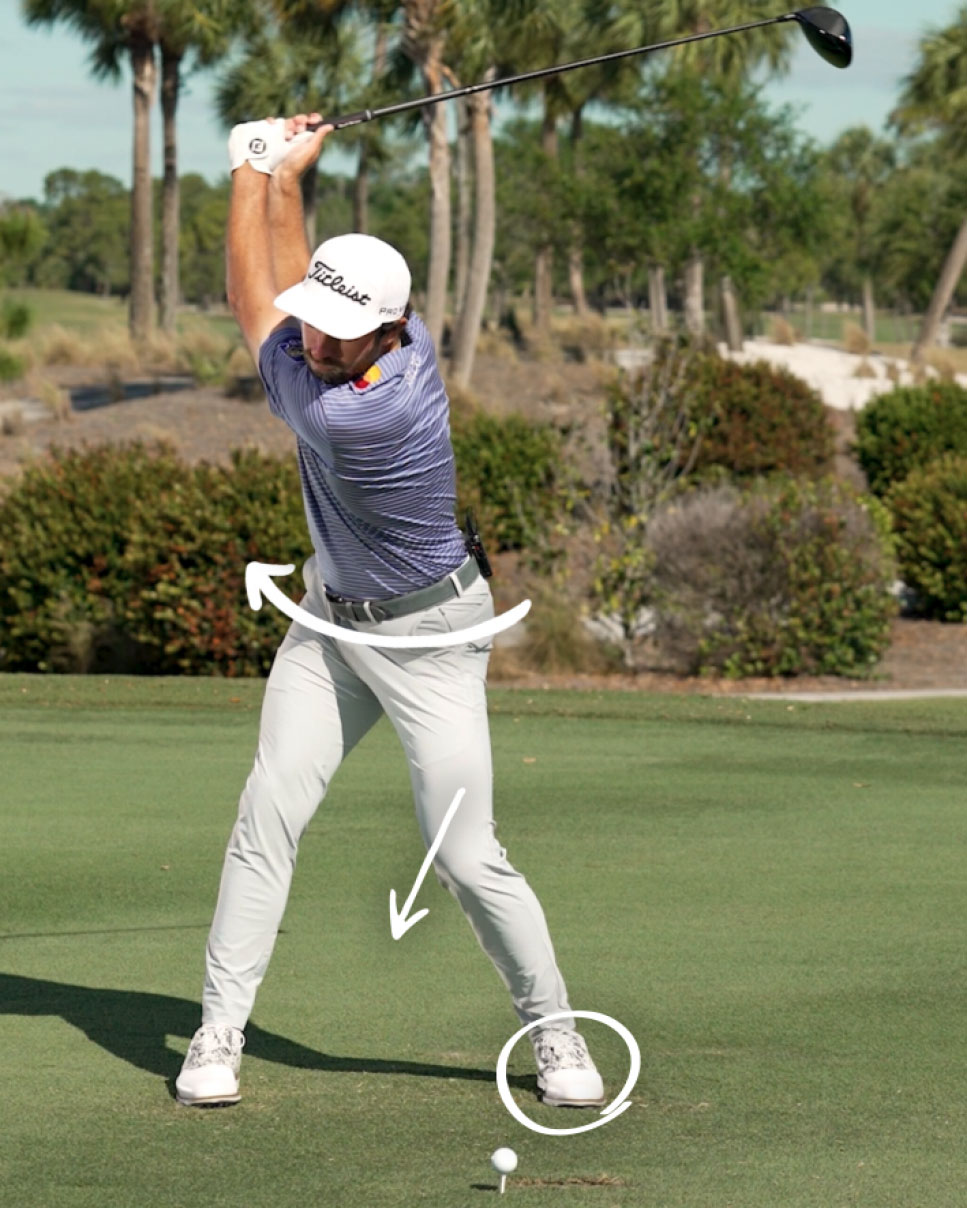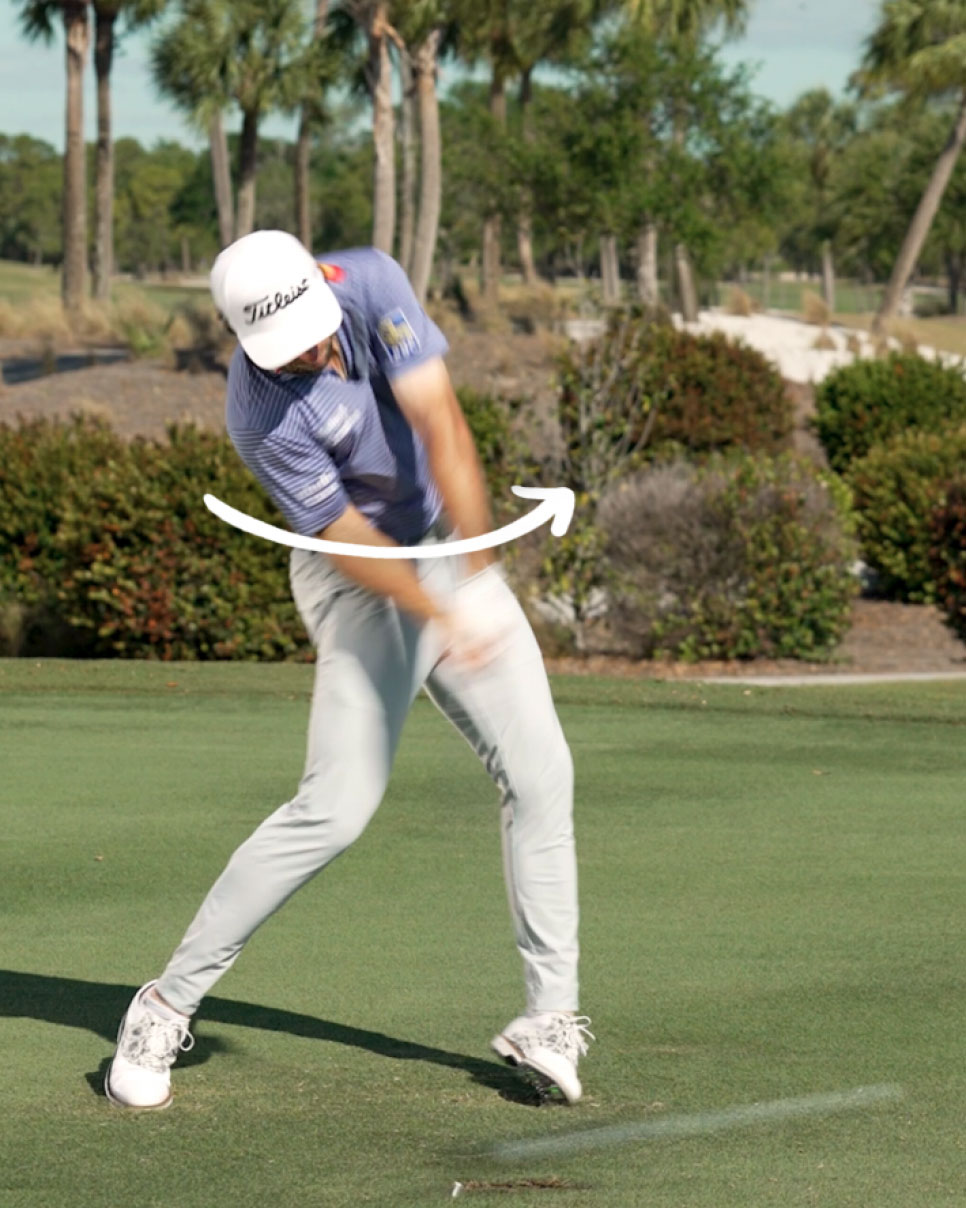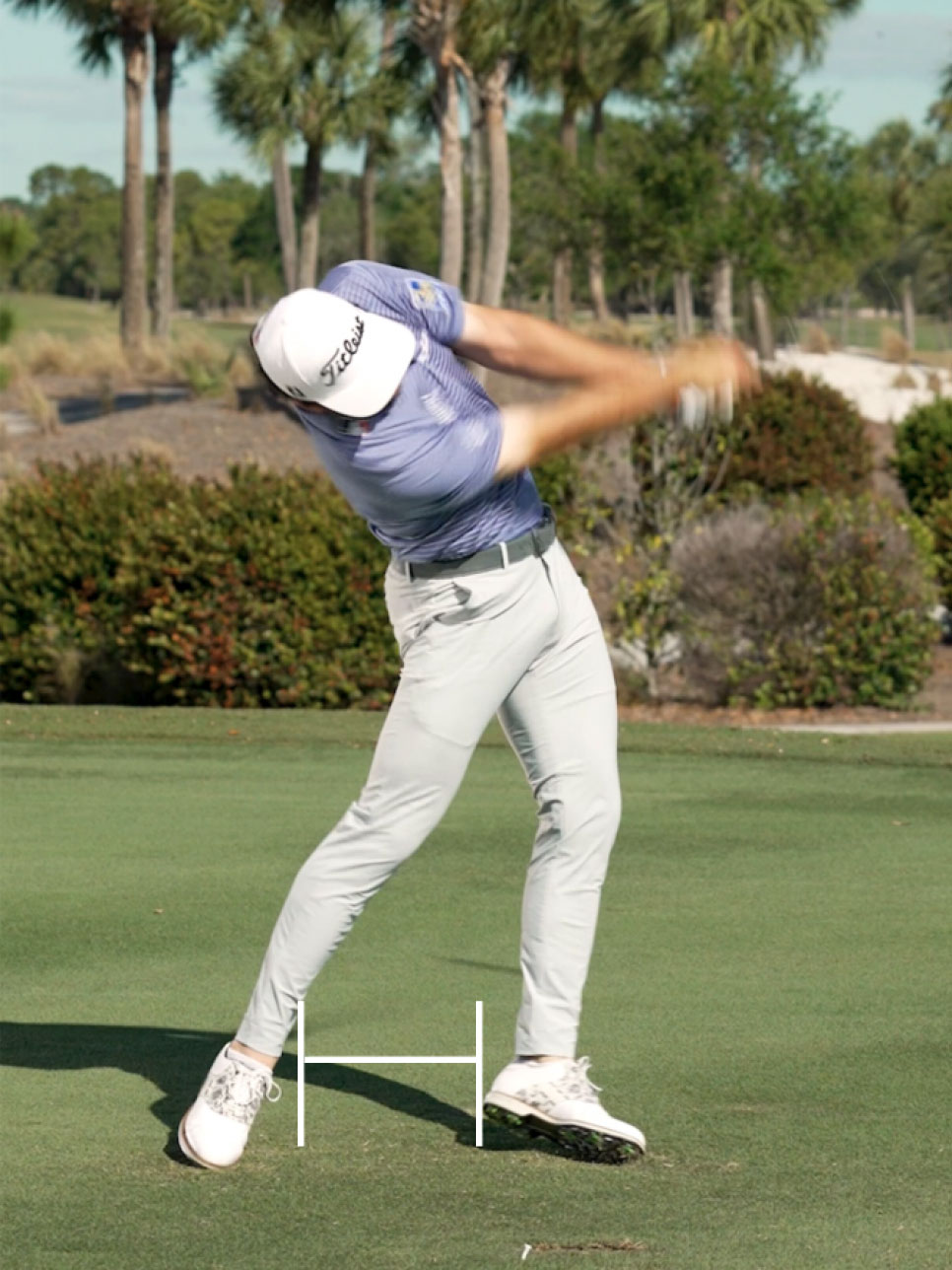When you watch PGA Tour Rookie of the Year Cam Young swing his driver, your eyes are likely drawn to how he briefly stops his motion in the transition from backswing to downswing.
But if you’re wondering how he’s able to carry the ball 320 yards, you’re looking in the wrong place.
We asked one of golf’s foremost biomechanists, JJ Rivet, to analyse the dynamic motion of Young’s driver swing and identify the true secret to his power. Rivet found it.
And guess what? It’s a move that you can copy!
Now here’s where we’ll do you a favour. We’ll tell you what really helps him (and possibly you) blister the ball. You can skip the science explanation and just head to the bottom of the article to watch it in action. Or you can continue reading if you want to know why. But fair warning, Rivet’s analysis might be a bit complex to understand.
Young’s left knee secret
“First, from a biomechanical point of view, his backswing is the perfect, athletic, coiling movement,” Rivet says. “To reach this level, he had to train on slippery or unstable surfaces or play field or ice hockey.” (Disclosure: Rivet didn’t know that Cam played junior ice hockey.)
Rivet says being able to create and store great energy comes from Cam’s ability to let his left knee dip inside of the target line without the left foot rolling and destabilising the rotation of his pelvis. It would be a mistake to let the left foot roll inward to create this massive coiling action, Rivet says.
“The energy storage in the backswing and the solid shearing forces applied to both feet are magnificent,” he says. “And note how he holds his spine angle while doing it.”
Taking the analysis a step further, Rivet says, “from an energetic standpoint, the MOI (moment of inertia) between the centre of gravity of the club and the central axis of rotation of the body play perfectly. He’s coiling in control, like a skater preparing to tighten the arms to turn faster and jump.”
Now here’s where the left knee really adds life to Young’s swing.
He lets it dramatically shift out toward the target before his pelvis rotates around it, Rivet says. This move might seem odd, as golfers are often told to straighten the left leg (or right leg for lefties) before the club reaches the ball. Not Young. He uses it as another lever or power accumulator, getting its lateral and rotational movement out ahead of his hip rotation, arm swing and clubhead release.
“The key is that his left leg resists being destablised,” Rivet says. “It’s a perfect weight shift and rotation around the left leg. The shift is so strong that the right foot slides toward the left. This swing makes me think about the fundamentals of a hockey swing adapted to golf. The left leg is the key. You need to work on core strength and glute exercises to adopt this move, for sure, but it’s not necessarily a complex move to copy.”
If you want to try it, here are some keys to remember:
1. Swing the club back wide, allowing your hips to rotate away from the target just like your shoulders do. To assist, let your left knee move inward (point behind the ball) as you reach the top.
2. Keep your feet firmly planted as you fully coil.

3. Start the downswing with an lateral and rotational shift of the left knee toward the target. When it moves out ahead of the ball, the pelvis should then rotate around it.

4. While maintaining a stable left leg, keep rotating your body and release the club into a full finish. Feel like the club isn’t moving its fastest until it passes through the hitting area (like the last-second release of a snapped towel).



Here’s a look at Cam’s “secret” move from two different perspectives.









